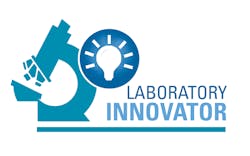MLO’s 2023 Lab of the Year winner, the Department of Pathology and Laboratory Medicine at Avera McKennon Hospital and University Health Center, was the first laboratory to achieve the CAP’s ISO 15189 certification. What type of support does the CAP provide to labs interested in pursuing this certification?
True, in 2009, Avera was the first hospital laboratory in the nation and world to achieve this accreditation, through the College of American Pathologists. This is a voluntary accreditation based on the International Organization for Standardization, hence the ISO reference. It is achieved through a highly disciplined approach to implementing and sustaining change. The CAP 15189 program offers laboratories a quality partnership, unequalled knowledge, and support. There are dedicated assessors to your hospital all through the accreditation cycle who specialize in ISO 15189. That partnership drives results by continuing to identify opportunities for improvement. There’s cost savings, because of better defined processes, fewer errors, and isn’t that what we are all striving for? Turnaround times are reduced, and greater efficiency increases opportunities to expand testing capacity or expand your test menu. Bottom line: it’s all about protecting patients’ health and operating at the top of your game.
It really is a marvelous achievement for a laboratory to have both CAP and ISO accreditation. The ISO accreditation really focuses on consistency and process, where the CAP’s standard accreditation is driven by our checklists and the CLIA requirements and other requirements our Accreditation and Scientific Committees believe will enhance patient care. Having a laboratory maintaining both ISO and CAP accreditation is truly a next-level laboratory. I congratulate MLO for making an excellent choice!
What role do you think laboratory medicine can play in reducing health care disparities?
The clinical laboratory is truly at the foundation of all things affecting patients, without accurate, reliable laboratory data and patient diagnoses, everything else falls apart. Because the clinical laboratory is at the foundation, it provides us an opportunity to constantly explore for implicit bias. One of the key things the CAP has identified over the last few years, and really embraced and promoted, is changing the antiquated and non-scientific adjustment for the estimated glomerular filtration rate for patients who are identified as Black or African-American. We now understand the race-based adjustment that used to be commonplace for the eGFR calculation was not scientific. It got in the way of early identification of end stage renal disease and possibly transplant opportunities for patients in the Black community. Adopting the non-raced based eGFR calculation methodology is imperative to improving patient health and health care disparities. I am thrilled that many of our more than eight-thousand CAP-accredited laboratories were quick to comply with this change, with many more following suit.
Other opportunities to identify health care disparities include the reference ranges for the transgender community. Estrogen taken over an extended period will impact physiology in such a way that we may need to consider how to take that into account as far as normal ranges are concerned.
Just like every other specialty in medicine access to health care is an issue. This may be either in urban areas where there are health care deserts, or it may be in rural areas where there isn’t an acute care hospital for hundreds of miles. Just like patients will have trouble finding primary care physicians, they will also have trouble finding pathologists and appropriate clinical laboratory support and diagnostic services. One of the things the CAP is looking at is trying to bridge this gap and how digital pathology can be leveraged to reach smaller hospitals in rural areas where a pathologist may be working alone or only be able to visit a day or two a week. Using digital pathology, a solo pathologist can have ready access to other pathologists with whom they can consult, allowing that pathologist and that patient to benefit from those intellectual and academic resources of having a larger group practice.
Coming out of the pandemic, what current challenges from members of the CAP and its accredited laboratories are you hearing about?
During the height of the pandemic, we definitely saw a need for more public health resources. As we are coming out of COVID, we are all certainly wondering when the next pandemic will hit. Has there been enough investment into those public health resources to shore up where we saw weak points in the last couple of years? Are the weaknesses in the supply chain we all experienced at different points of time during the last three year been shored up? Have public laboratories been more generously staffed?
We also realized how critical medical technologists, clinical laboratory scientists, and pathologists are to the very foundations of health care. Again, without testing, you don’t know what you’re treating. During the pandemic we were all reminded of how important testing was and how precious the human resources around clinical laboratory testing is. Coming out of this pandemic, I am even more concerned about building a solid pipeline for future pathologists and clinical laboratory scientists and enthusiastic about any efforts to let bright young STEM students know that following these pathways will be very fruitful.
Where do you think laboratory medicine should be headed in the future?
Like so many industries, pathology is going to have a future that will in some way shape or form include augmented intelligence tools. We are going to have to figure out how to work in consort with these tools. Occasionally, I have heard concerns that AI might replace diagnosticians like radiologists and pathologists. I frankly see that as very unlikely. I see AI as a tool that will augment our ability to make diagnoses, efficiently, accurately, and reliably. When IHC came out in the late 1980’s and then really blossomed in the 90s, there were some in the laboratory community that thought this would replace pathologists because you could just stain the slide and determine if something was benign or malignant, you didn’t need morphology anymore, you didn’t need the routine histology, you could just rely on this brown stain to tell you all you needed to know about a tumor. Of course, pathologists practicing today know that certainly is not how that turned out. In fact, you must have the same amount of sensitivity to morphology, that is basic H&E histology, to use IHC tools accurately. The same thing is going to be the case for applying AI tools — it will be another layer, another depth of knowledge and understanding that we can provide. It’s not suddenly going to make things simple. I think our expertise will be in even greater demand.
What have you most enjoyed in your leadership role at the CAP?
There have been so many positive things about my experience leading the CAP. First, it has been a wonderful opportunity to get to know more of the members. We have such a terrific and involved membership base. Getting to know pathologists in all diverse kinds of practices or work situations from various parts of not only the country, but the entire world, has been remarkable. I will tell you working with the CAP staff has also been extremely rewarding. We have a staff of more than six hundred incredibly talented and dedicated people who support the members every day and who are making my job as president much easier.
Another thing I found really rewarding, is the number of physicians from all diverse backgrounds sharing with me that by having a mid-career woman as president of the College, it opened their eyes to what they might be able to do and achieve. It seems to have inspired at least some people to pursue stretch goals that they might not have otherwise pursued. They can begin to see themselves in leadership roles they might not have otherwise considered because they haven’t seen anybody who looked like them or who didn’t represent a traditional leadership profile.
I do hope the pathologist community will continue to embrace the CAP as their professional home. All throughout my career, the CAP has been there to support me. Not only in making accurate and reliable surgical and cytopathology diagnoses, but also providing me with the support and knowledge that I needed to be an effective medical director of laboratory. The CAP has also been there as a professional family for me and a place where I can go and share challenges, get great feedback, wonderful comradery, and a sense of community.
All this by far, has made it more fun and rewarding to do this work.


